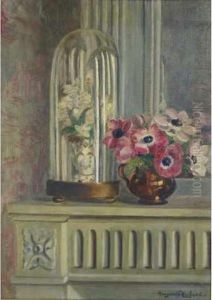Marguerite Hachard Paintings
Marguerite Hachard, born in 1737 and passing away in 1801, was a French nun and artist whose life and works provide a unique glimpse into the intersection of religious devotion and artistic expression during the 18th century in France. Not widely known in the mainstream art historical canon, Hachard's contributions are nevertheless significant for understanding the role of women in religious communities and their engagement with artistic creation during this period.
Hachard was a member of the Ursuline order, a Roman Catholic religious order founded in 1535 by Angela Merici, with a primary focus on the education of young girls and the care of the sick and needy. The Ursuline convents were among the few places where women could receive an education and engage in intellectual pursuits during the early modern period, including the study of art. Within this context, Hachard, like many of her fellow nuns, would have been trained in various forms of artistic expression, including painting, embroidery, and manuscript illumination, as these skills were valued both for their educational utility and their contribution to the spiritual and aesthetic environment of the convent.
While detailed records of Marguerite Hachard's artistic works are scarce, it is known that she, along with other Ursuline nuns, contributed to the artistic and cultural life of her convent through the creation of religious artworks. These works would have likely included devotional images, altar pieces, and decorated liturgical texts, which played a significant role in the religious life of the community. Through her art, Hachard would have engaged in a form of spiritual practice, using her skills to express her faith and devotion, and to contribute to the shared religious experience of her community.
The legacy of Marguerite Hachard and artists like her highlights the important, though often overlooked, role of women in the arts during the 18th century, especially within the confines of religious institutions. While the constraints of her time and status as a nun limited her opportunities for broader recognition, Hachard's life and work exemplify the ways in which art served as a vital means of expression and devotion for women in the pre-modern era. Her story underscores the need for a more inclusive art historical narrative that recognizes the contributions of women artists, particularly those whose lives were dedicated to religious service.
